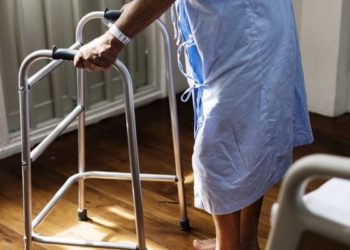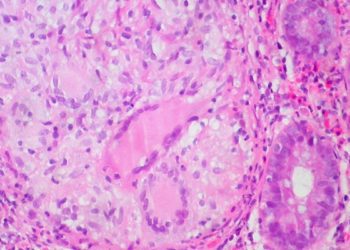Early intervention for cerebral palsy should begin at diagnosis or in children meeting high risk criteria – International Clinical Practice Guideline
1. When a child is diagnosed with or meets the criteria of high risk for cerebral palsy, intervention should start as soon as possible.
2. Referrals for intervention across the various domains and associated impairments should be specific to the recommendations in this guideline.
Evidence Rating Level: 1 (Excellent)
Study Rundown: Cerebral palsy (CP) is the most common childhood physical disability. It is characterized by a heterogenous group of disorders affecting the muscle tone and the development of movement and posture. With the establishment of evidence-based guidelines for early and accurate diagnosis of CP, there is now a growing need to summarize effective, CP-specific early interventions and conduct new trials that target the critical developmental window for neuroplasticity in children in order to improve function and minimize complications. This systematic review sought to summarize the best available evidence on CP-specific early interventions for children aged 0 to 2 years at high risk or diagnosed with CP. Comprehensive systematic searches, using the Cochrane method, were conducted across 9 domains promoting motor function, cognitive skills, communication, eating and drinking, vision, sleep, managing muscle tone, musculoskeletal health, and parental support. After analysis, there was good-quality evidence for involvement of parents in intervention programs and task- and context-specific interventions in order to improve motor and cognitive outcomes. Three best-practice guiding principles were recommended including 1) immediate referral for intervention after a diagnosis of or at high risk of CP in children, 2) building parental capacity for attachment, and 3) parental goal-setting at the beginning of intervention. The evidence in other developmental domains was weak, and conditional recommendations were based on other high-risk populations. A limitation of this study was that there were only a handful of studies from the target population of children aged 0 to 2 years diagnosed or at high-risk of CP, decreasing the power of the analysis and generalizability of the practice guiding guidelines.
Click to read the study in JAMA Pediatrics
Click to read an accompanying editorial in JAMA Pediatrics
Relevant Reading: Early, accurate diagnosis and early intervention in cerebral palsy: advances in diagnosis and treatment
In-Depth [systematic review and meta-analysis]: This systematic review and clinical guidelines recommendation sought to summarize and present the best available evidence for intervention for children aged 0 to 2 years at high risk of or diagnosed with CP. Data compilation consisted of literature from CINAHL, Cochrane, Embase, MEDLINE, PsycInfo, and Scopus. Studies were appraised using tools including A Measurement Tool to Assess Systematic Reviews (AMSTAR) or Cochrane Risk of Bias. Best practice guiding recommendations were formed using the Grading of Recommendations Assessment, Development, and Evaluation (GRADE) framework and reported according to the Appraisal of Guidelines, Research, and Evaluation (AGREE) II instrument. In total, 16 systematic reviews and 25 randomized clinical trials (RCTs) were included in the study after screening via inclusion/exclusion criteria based off of the 9 predetermined topics regarding CP management in children. The quality of evidence was variable, and only a few strong recommendations were presented. In general, the study outlined three best practice guiding principles for CP management in children. Firstly, children diagnosed with or at high risk of CP should be immediately referred for CP- and age-specific interventions. Secondly, goals should be set that are task- and context-specific, at the appropriate level of difficulty, and updated regularly. Lastly, clinicians should support parents and caregivers to build parental capacity and expertise, prioritizing a positive parent-child relationship. A further 28 recommendations (24 for and 4 against) centered around the 9 domains were supported with key evidence from the studies: motor function (4 recommendations), cognitive skills (2), communication (7), eating and drinking (2), vision (4), sleep (7), tone (1), musculoskeletal health (2), and parent support (5).
Image: PD
©2021 2 Minute Medicine, Inc. All rights reserved. No works may be reproduced without expressed written consent from 2 Minute Medicine, Inc. Inquire about licensing here. No article should be construed as medical advice and is not intended as such by the authors or by 2 Minute Medicine, Inc.







